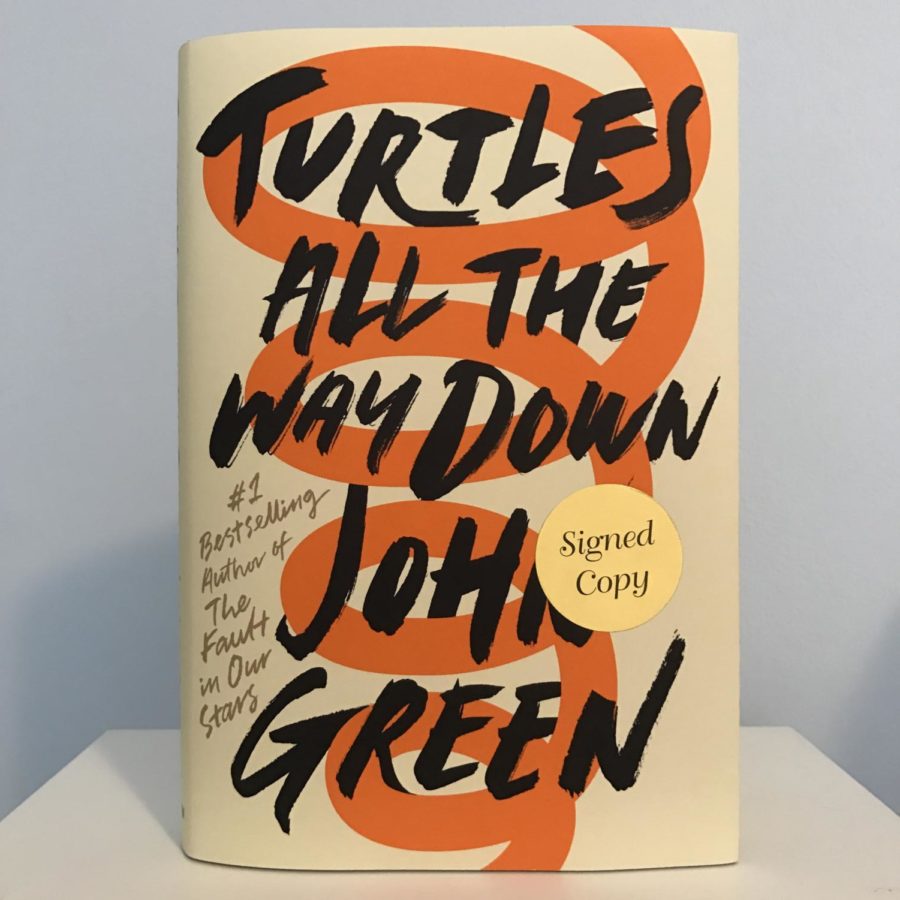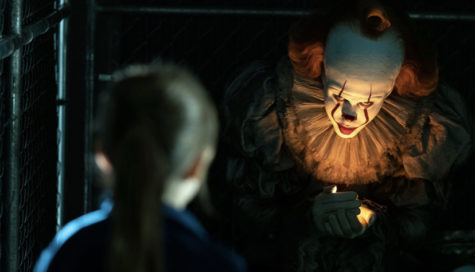Six year wait is worth it: John Green returns
After nearly six years since his last release, John Green has returned to the young adult literature scene better than ever with his newest contemporary, “Turtles All the Way Down.”
Following the overwhelming success of Green’s previous novel, “The Fault in Our Stars,” it became unclear how the bestselling author was going to top himself with his next novel. But Green exceeded expectations, easily making “Turtles All the Way Down” his strongest work that packs a powerful punch in less than 300 pages.
The story begins with Aza Holmes, a sixteen-year-old girl living in the modest city of Indianapolis, receiving the news that her childhood friend’s father is missing. Oh, did I mention he’s a billionaire? She soon finds herself on the path of solving the mysterious disappearance with her best friend in hopes of possibly getting a $100,000 reward. However, manhunts and billionaires play a back-seat role to the true focus of this novel: Aza’s excruciatingly real struggle of living with anxiety and obsessive-compulsive disorder.
OCD is defined as unreasonable thoughts and fears that lead to compulsive behaviors, commonly misconstrued and used to explain a habit or organizational preference. Green, who has commented many times on having OCD himself, communicates the severity of the condition immediately in the first chapter of the own-voices novel.
It only took a few pages for me to start squirming. Right off the bat, Aza’s obsessive thoughts are introduced as she eats her lunch and listens to her abdominal noises, which she fears are symptoms of a bacterial infection called Clostridium difficile. Aza most definitely does not have C. diff, but she continues these irrational thoughts, focusing on the ways she could possibly be infected and even die from the rarely fatal infection.
Not much later, we see Aza’s compulsive behavior of breaking open a self-inflicted wound on her finger pad, and the obsessive thoughts that cause it. She latches onto the idea that her wound is infected, which sends her into an anxiety induced thought spiral, causing her to unwrap her bandage, break the wound open again, cleanse, rebandage, repeat.
I found that one of the most compelling parts of this book is the lack of a typical plot set up. The novel is very much character driven, and the characters are, in turn, driven by the situations caused by Aza’s ever-present OCD. It could be argued that not much actually happens, and the majority of the novel is filled with unnecessary repetitive descriptions from Aza’s hyperactive mind. But, I would argue that the goal of Green’s novel was not to execute a thrilling mystery, but to instead capture the essence of Aza’s struggle and what it means for her relationships. It highlights how it affects not only the people important to her–the sweet boy across the river, her peppy Star Wars loving best friend, her worrisome mother–but also herself. Her disorder is at the forefront of the novel because it is at the forefront of Aza’s mind, leaving us with only small breaks between each new thought spiral.
Besides Green’s effective execution of a mental illness in literature, he has an uncanny ability to understand teenagers in a way I’ve never seen before. Too many authors portray teenagers as angsty, problematic messes, but Green creates young adults with complex thoughts, ideas, and concerns. Not only does he represent them well through their thought processes, but also in their use of technology. He writes realistic text messages, utilizes FaceTime, and even has Aza go on an extensive social media stalking, these things all being very real and present in the lives of teens today.
In leaving you with my final recommendation, I will give a warning: this is not a book that exists to simply entertain–it exists to change the people who read it. No, this is not a mystery novel, and no, this is not a typical YA contemporary romance, so if that is what you were hoping to find, I’m sorry, but this isn’t it. This book is hard to read at times; it makes you uncomfortable, it makes you question the most basic things about yourself, and it makes you reflect.
“Turtles All the Way Down” is a story about struggle, loss, and helplessness. But most importantly, it is a story about strength, hope, and carrying on. This novel has the ability to make you feel like you aren’t completely alone, and in the end, isn’t that all we really want?

Audrey is a senior starting her second year on The North Star, and her first year as Managing Editor. She is looking forward to gaining valuable management...










